Your garden doesn’t need a miracle. It needs a hummingbird. That blur of feathers, wings buzzing like a tiny jet— it’s not just cute. It’s color-charged magic with a beak. And June? It’s the perfect time to roll out the red carpet. Literally. Red, orange, pink, magenta—hummers want bold. No pastels. No shrinking violets. If you want a garden that hums, flutters, and practically shimmers, you’ve got to give them what they love. We’re talking nectar-loaded blooms, nonstop color, and blooms that keep the party going through summer. Plant the right palette, and the hummingbirds won’t just visit. They’ll fight for your flowers. (And you’ll love every second of it.)
Scarlet Bee Balm

Scarlet Bee Balm is a showstopper in any garden. Its vibrant red flowers and minty fragrance make it irresistible to hummingbirds. Plant it in clusters for a bold statement.
With its tall, upright growth, it adds height and drama, blooming from late spring through summer.
Beyond its beauty, this perennial is easy to grow and adapts to various soil types. Its striking appearance and aromatic presence ensure your garden will buzz with life. Fun fact: Scarlet Bee Balm has been used in herbal remedies for centuries!
Coral Honeysuckle
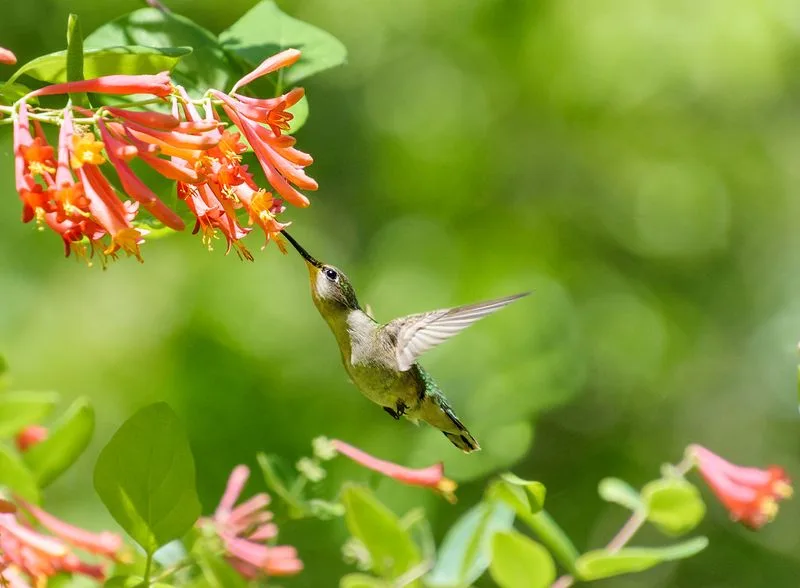
Coral Honeysuckle entices with its vibrant, trumpet-shaped blooms. This vine is a magnet for hummingbirds, offering sweet nectar throughout the summer.
Its orange-red flowers create a stunning visual against lush green foliage. Perfect for climbing structures, it provides vertical interest and natural coverage.
Plant it in sunny locations to maximize its blooming potential. This hardy, low-maintenance plant not only enriches your garden aesthetics but also provides vital sustenance for your feathered friends. Did you know? It’s native to the southeastern United States.
Fuchsia
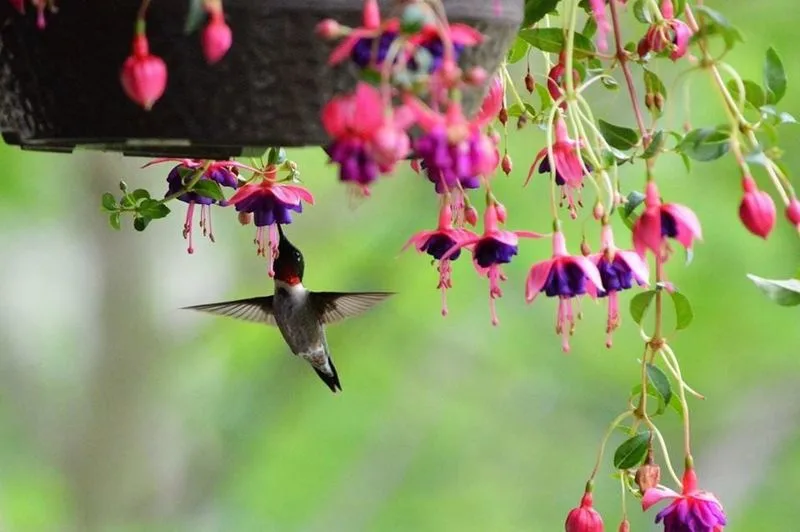
Fuchsia is a delightful choice for hanging baskets. Its pendulous blossoms in shades of pink and purple captivate both the eye and hummingbirds.
The flowers’ unique shape and vibrant colors create a dynamic visual display. These blooms thrive in partial shade, making them perfect for morning or afternoon light.
Easy to care for, Fuchsia requires regular watering and well-drained soil. Its long blooming season ensures continual attraction for hummingbirds. Fun fact: Fuchsias are named after the German botanist Leonhart Fuchs!
Red Hot Poker

Red Hot Poker, also known as Torch Lily, brings a fiery touch to your garden. Its striking spikes of orange and yellow flowers are a beacon for hummingbirds.
This perennial stands tall and proud, adding vertical interest and vibrant color. Plant it in well-drained soil under full sun for best results.
Resilient against drought, it’s an excellent choice for various climates. The bold, torch-like blooms ensure your garden is lively and vibrant. Interesting tidbit: Red Hot Pokers originate from South Africa.
Trumpet Vine
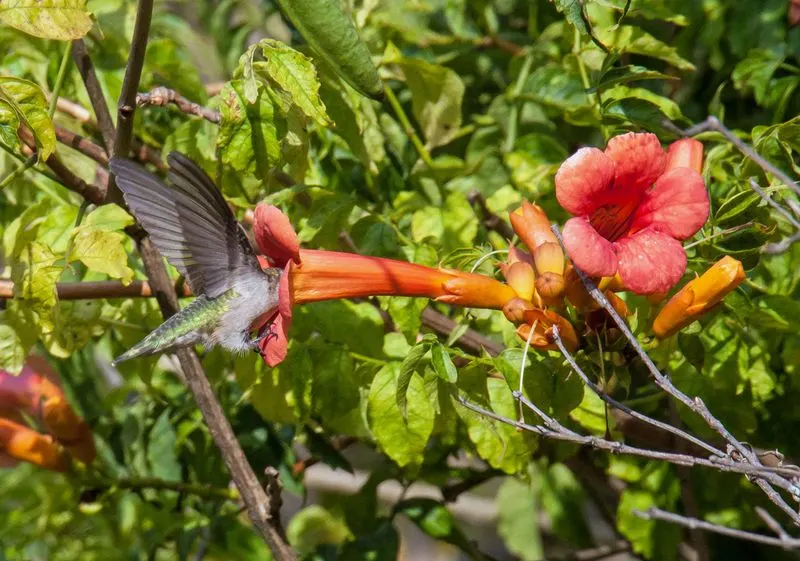
The Trumpet Vine is a robust climber, known for its large, trumpet-shaped flowers. Its bright orange blooms are a hummingbird’s delight.
Perfect for covering fences or trellises, it offers both beauty and privacy. This vigorous grower thrives in full sun and well-drained soil.
With its cascading blossoms, it adds a touch of the exotic to any garden setting. Fun fact: The Trumpet Vine can grow up to 30 feet long! Its rapid growth makes it an excellent choice for quick coverage.
Salvia
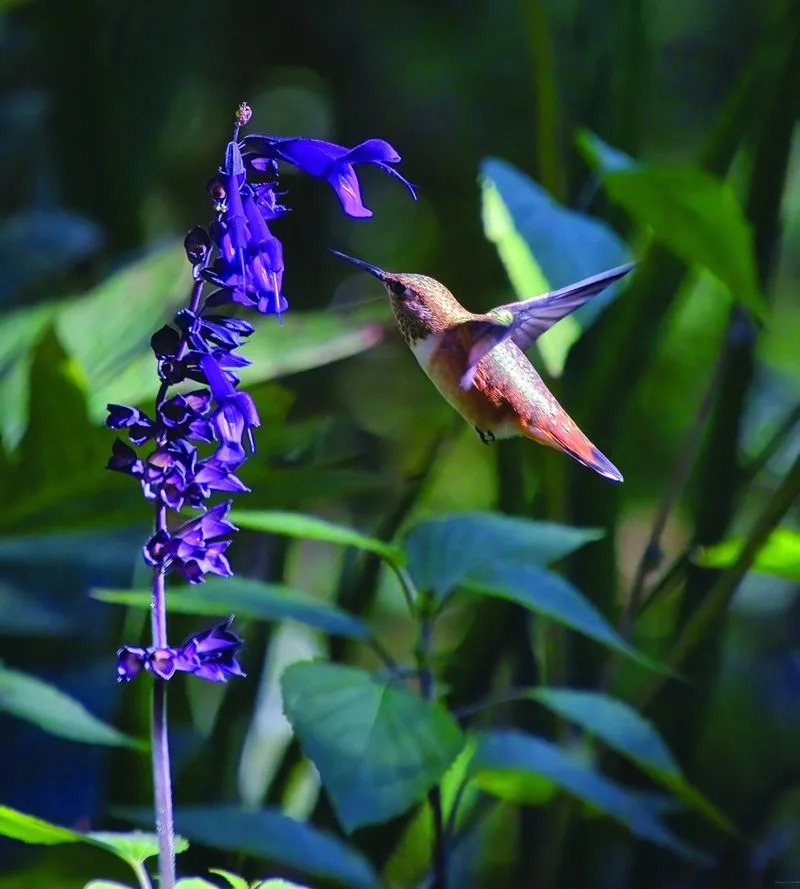
Salvia, with its tall spikes of vibrant flowers, is a feast for the eyes and hummingbirds. The purple, red, or blue blooms offer a striking contrast to green foliage.
Plant Salvia in sunny spots to enjoy its full vibrant display. Its drought-tolerant nature makes it a resilient choice for gardens.
Besides attracting hummingbirds, it also draws butterflies and bees, enhancing your garden’s ecological value. Did you know? Salvia is part of the mint family, known for its aromatic leaves.
Zinnia
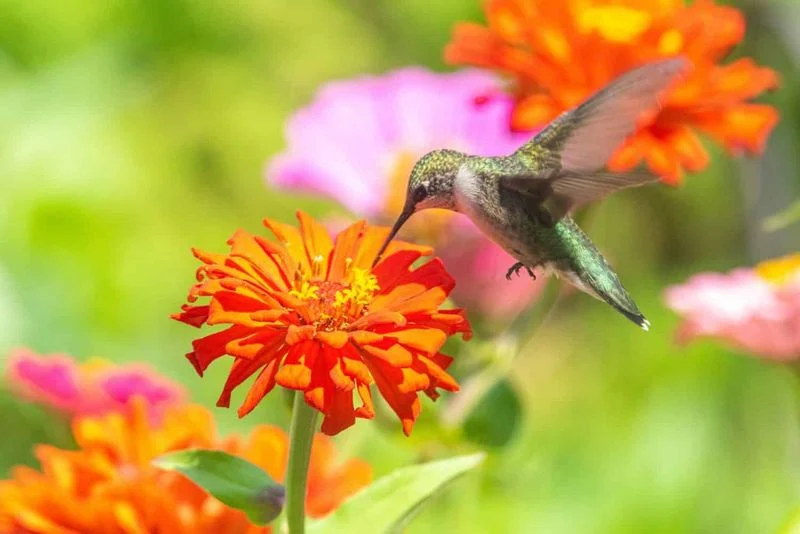
Zinnias are bursting with color, offering a dazzling display that attracts hummingbirds. Their bright, bold blooms stand out in any garden.
These annuals are easy to grow and thrive in sunny conditions. With a variety of colors available, they provide endless design possibilities.
Plant them in mixed borders or containers for a cheerful splash of color. Zinnias are not only beautiful but also attract beneficial insects. Fun fact: Zinnias were the first flowers to bloom in space aboard the International Space Station!

